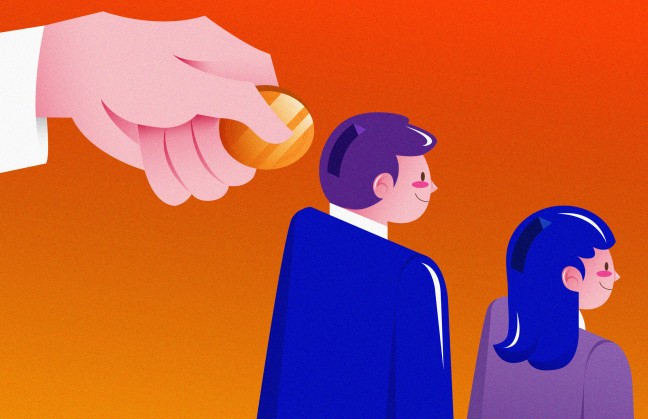Gender Bias in Microcredit Allocation
Emotions function as a mechanism through which gender hierarchies are reproduced in seemingly neutral financing processes

In Mexico, as in many Latin American countries, the vast majority of businesses are microenterprises, employing between 0 and 10 people. Their enormous contribution to the business landscape continues to grow: in recent years, the proportion of these types of businesses has increased (over 95%), while the share of small and medium-sized enterprises (SMEs) has declined (4.3%), according to economic census data from INEGI.
If we want to support the growth of these businesses, it is vital to facilitate access to credit at affordable rates. Whether to launch or grow a business, when an entrepreneur seeks a loan, they are not only aiming to improve their own life, but also that of their communities. Despite their great impact on income generation, employment maintenance, and poverty reduction in emerging countries, entrepreneurs still face many challenges in securing financing.
Crowdfunding has gained popularity in recent years as a way to address these limitations. This form of microfinance allows socially motivated lenders to support micro-entrepreneurs who are excluded by traditional financiers due to insufficient credit ratings or other requirements.
Telling a Story with Emotion
Whether in a bank office or on a crowdsourcing platform, when seeking a loan, it is not only the idea or business plan that matters, but also the story behind the entrepreneur and their venture. And as we know, a story without emotion rarely generates empathy. Emotions are part of human communication and, beyond quantitative assessments, serve to prompt action. It has been shown that lenders’ and evaluators’ credit decisions are influenced by the affect heuristic — in other words, emotions affect judgments about risk and reward.
This is especially true in collective microfinance platforms such as Kiva.org, where lenders often make decisions based on short and emotional descriptions. These stories can evoke positive emotions (such as trust, enthusiasm, or determination) or negative ones (such as desperation, anxiety, or stress). But what happens when emotions work against the borrower? In the article “Pitch Perfect: Emotional Appeals and Lender Decision-Making in Social Entrepreneurship,” coauthored with Katrina Brownell (Virginia Tech University) and Sönke Mestwerdt (EGADE Business School and University of Manchester), we explore how emotions expressed in these narratives not only influence financing decisions but can also reinforce gender inequality.
Through linguistic analysis of 2,098 narratives on Kiva.org and a follow-up experiment, we show how lenders’ decision-making processes shape gender disparities in financing, and how emotion can serve both as a persuasive tool and as a structural barrier in crowdfunding-based microfinance.
Gender Bias in Emotional Expression
According to our study, positive emotions increase financing, while negative ones reduce it. For instance, anxiety or stress can act as risk signals, prompting lenders to take a more cautious approach. Negative emotions can undermine a lender’s confidence in the entrepreneur’s ability to manage resources or raise concerns about long-term sustainability.
However, the strategic value of emotional expression varies by gender. Male entrepreneurs benefit more from expressing positive emotions than female entrepreneurs. Yet negative emotions reduce funding, and women in particular face disproportionately harsher penalties—especially from lenders who make decisions more deliberatively.
Unlike men, who can use both positive and negative emotions to attract financing, women navigate a much narrower emotional space in which only certain expressions are socially acceptable. This demonstrates that emotional signaling is not equally available to all entrepreneurs.
It Depends on the Lender’s Style
Secondly, we found that lenders’ decision-making styles also shape these gendered effects. Specifically, we observed that intuitive lenders prefer male entrepreneurs who express positive emotions, while deliberative lenders impose stronger penalties on women expressing negative emotions.
Since deliberative lenders focus more on objective indicators, they may perceive entrepreneurs who show negative emotions as less capable of handling challenges effectively, resulting in a stronger negative impact on the funding received. Conversely, intuitive lenders may be less sensitive to the negative implications of adverse emotions due to their reliance on affect.
Both styles suggest that lenders’ decision-making processes act as a filter through which gender bias is activated. Women not only benefit less from expressing positive emotions in their narratives but also face harsher penalties when expressing negative ones.
When Emotions Can’t Be Persuasive
Ultimately, this double penalty creates a cumulative disadvantage that limits women’s ability to strategically use emotional language. In line with prior research documenting women’s barriers to accessing capital, we find that gender constraints lead to compounding disadvantages for female entrepreneurs. Women are thus left with no optimal strategy for emotional expression. Emotion serves not only as a persuasive tool but also as a structural constraint that reinforces gender inequality.
This study reframes how we understand the relationship between emotion and inequity in entrepreneurial finance. While previous literature treated gender disparities and the role of emotion as separate phenomena that occasionally intersect, our findings show that emotions do not merely influence funding outcomes — they also act as a structural mechanism reinforcing gender inequality beyond individual emotional influences.
The author is Distinguished Professor of Social Entrepreneurship at EGADE Business School.



